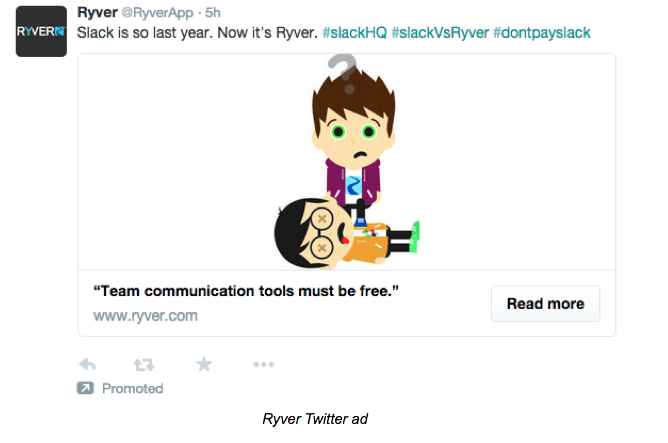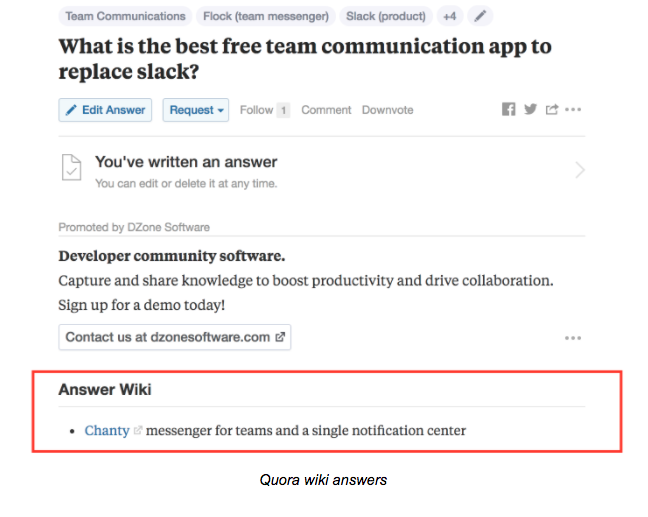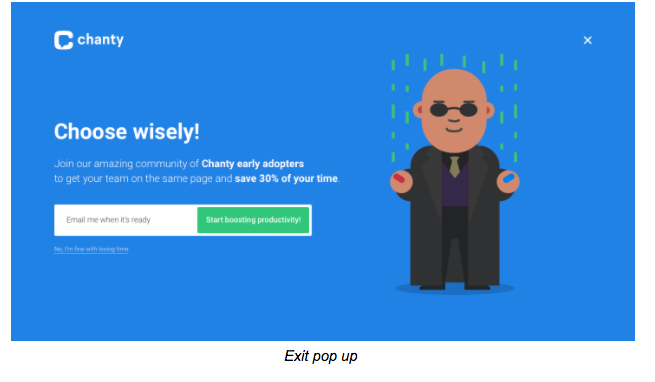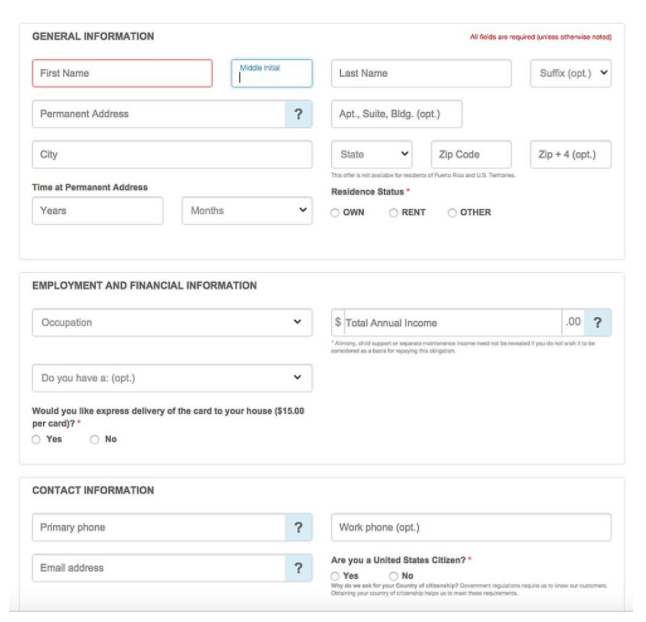Marketing
5 SaaS lead generation secrets to try in 2018
The ultimate goal of the SaaS product marketing is lead generation. The overall success of your marketing campaign whether you are making changes to a website, creating a next piece of content or running Facebook ads will be judged by a number of emails these activities deliver. In the long run, the question you should always keep in mind is how your marketing efforts will affect the number of people hitting the ‘Sign up’ button.
At Chanty, we had to learn a lot about lead generation as well as try new things before we found what actually works for us. Today we are sharing the best of our lead generation advice. Some of the hacks work well for us to get the precious sign ups for Chanty, others have proven to work great for well-known SaaS companies.
1. Lead generating content
Content marketing is nothing new. Unfortunately, there are still companies that invest into creating content, but don’t get the outcome they’ve hoped for. The good news is content marketing, if done right, could bring amazing results. Let us share our hack #1 that brings us a steady stream of customers.
Here’s a simple path you should follow:
- Determine your top competitors in the niche
- Make a keyword research for ‘Competitor Name’ alternatives, as well as ‘Competitor X’ vs ‘Competitor Y’
- Choose the keyword phrase with the best balance of monthly search queries and keyword difficulty (could be checked in Ahrefs or SEMrush)
- Write an in-depth article targeting the keyword. Among other alternatives mention your product. Highlight why it’s better than your competitors.
- Acquire some backlinks pointing to an article
- Enjoy the deluge of sign ups
This article on Slack alternatives in our blog is a living proof of this strategy in work. It’s the easiest way to go if you have a prominent competitor in the niche. If you don’t – well, there’s still the traditional inbound marketing for you to try. Determine your buyer persona, learn their pains, solve them with your content, educate, engage and provide value. Create a downloadable asset such as an ebook or a comprehensive guide and offer it in exchange for visitors’ emails. Visit Hubspot Academy to learn how to do it in details.
2. Resonating ads
I can’t help, but mention this tactic, used by Ryver, our competitor. With the obvious leader in the face of Slack, team communication and collaboration niche is pretty hard to enter. You have to explain how you are different from Slack to their millions of fans and fight for your place in the sun. Ryver made a power move and set up the aggressive ad campaign in Twitter confronting their main rival.

Ryver says they’ve seen incredible engagement with these promoted tweets compared to other tweets where they’d speak of their advantages as a team communication app. Eventually, this approach helped them generate buzz around the product, got them noticed by thousands of potential customers and resulted in the long awaited sign ups.
I don’t encourage to go against your competitor with your ad campaigns. The ethical side of this approach is controversial and completely up to you. The bottom line is it works and gets you the precious emails.
3. Referral traffic from Quora
So many marketing channels, so little time. Referral traffic could become a great acquisition channel as well. After spending one week answering questions on Quora, I was surprised to discover its traffic converts at impressive 6%.
Here’s a priceless hack we’ve learnt – wiki answers. Rather than asking friends to upvote your content and fighting desperately to rank higher among other answers, here’s what you should do.
Whenever you find a question related to your niche e.g. it’s something like “What are the best Slack alternatives?” for us, hit the three dots menu and choose ‘Create Answer Wiki’. Once you post it, it’ll be reviewed by Quora staff and, if doesn’t violate their policy, it’ll be approved. Not everyone is aware of this hack so hurry up to make use of it asap.

4. Pricing model matters
Marketing isn’t only about promotion. There are still the three other P’s, remember? It’s hard to overestimate product pricing when it comes to generating leads.
When marketing thinks of leads, business thinks of sales. Not all leads are made equal. There are leads that turn into paying customers. There are also leads that churn after a free trial or remain freemium forever. Freemium, free trial, premium or other models you employ to price your product will result in different levels of lead generation. I’ve written more about various pricing models here. Let me highlight a few points.
I’d recommend to stay away from freemium unless you are a big company backed up by investors. Freemium sounds better than it in fact is. It means customers can use the lite version of your product for free for as long as you want. With all the virality you might get by going with freemium, you should consider the cons carefully.
Think of the number of free users you’ll have to maintain in order to get a handful of paying customers. Although it may look attractive, you can quickly find yourself in a freemium trap – answering support tickets of free users and developing the features that freemium customers request.
The bottom line is price the product wisely and learn about pros and cons of each pricing model. Generating leads is good. Generating leads that eventually become paying clients is even better.
5. Conversion rate optimization
No tactics or hacks will work If your website isn’t optimized for conversion. I’m not going to repeat what’s already written on the other blogs. Let me just share our experience on this.
It is a good idea to encourage those who already signed up to share the love with friends. Offer something in exchange, e.g. we’re offering the early bird access to our app if the potential customers share the word about Chanty in social networks. This helps us increase brand awareness and attract new clients to our team messenger.

I know pop ups are annoying. That’s why I didn’t choose to put up distracting windows that appear when you are in the middle of reading an article. Instead, we’ve opted for an exit pop up. Once the user is about to leave your website, it comes out. The results have exceeded our expectations – it now generates about 10% of our sign ups.

The last, but not the least – signing up at your website should be incredibly easy. It goes without saying, you should remove CAPTCHA and other challenges in the way of your potential customers. Unless you are a well known app like HubSpot, avoid multiple fill in forms at the sign up form. Email is, in fact, all you need. OK, ‘Name’ is another appropriate field to add. Just make sure it’s doesn’t become this:

If you have user-unfriendly forms that still convert, my best guess is you are holding a complete monopoly over the niche.
Conclusion
Marketing a SaaS product is complicated and involves a series of various activities. The bottom line, however, is the number of sign-ups these activities generate. These are the metrics that every founder and CEO will keep in mind when evaluating efforts of a marketing team.
Therefore, try to strike a balance of promotion, price, product and placement to meet the business goals. Staying on the ethical side is equally important. Try the lead generation and conversion optimization hacks we’ve shared in this article to boost the number of sign ups on your website. Feel free to share other tips that worked well for you in the comments below.